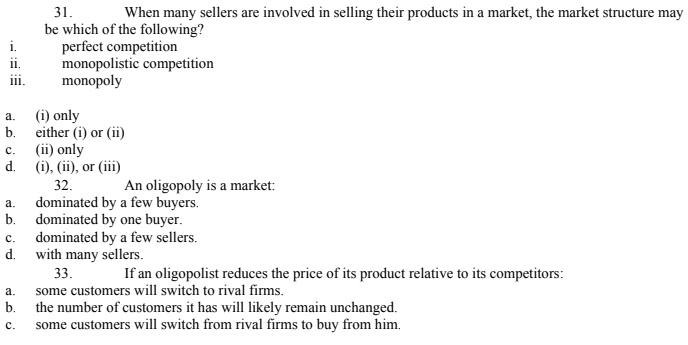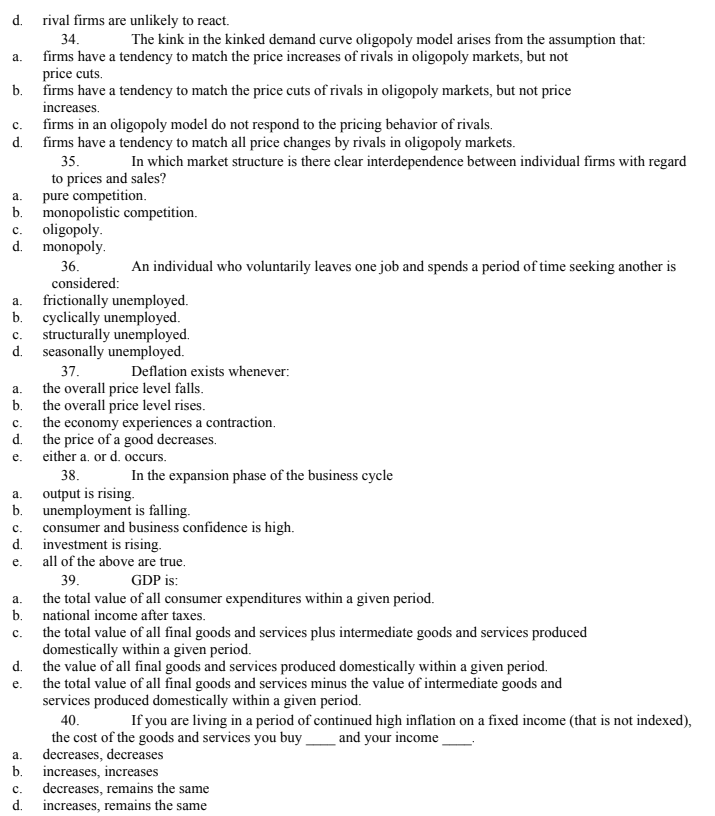Identify the choice that best completes the statement or answers the question.
31. When many sellers are involved in selling their products in a market, the market structure may be which of the following? perfect competition monopolistic competition 111. monopoly a. (i) only b. either (i) or (ii) C. (ii) only d. (i), (ii), or (iii) 32. An oligopoly is a market: a. dominated by a few buyers. b. dominated by one buyer. C. dominated by a few sellers. d. with many sellers. 33. If an oligopolist reduces the price of its product relative to its competitors: a. some customers will switch to rival firms. b. the number of customers it has will likely remain unchanged. C. some customers will switch from rival firms to buy from him.d. rival firms are unlikely to react. 34. The kink in the kinked demand curve oligopoly model arises from the assumption that: a. firms have a tendency to match the price increases of rivals in oligopoly markets, but not price cuts. b firms have a tendency to match the price cuts of rivals in oligopoly markets, but not price increases. C. firms in an oligopoly model do not respond to the pricing behavior of rivals. d firms have a tendency to match all price changes by rivals in oligopoly markets. 35. In which market structure is there clear interdependence between individual firms with regard to prices and sales? a pure competition. monopolistic competition. C. oligopoly. monopoly. 36. An individual who voluntarily leaves one job and spends a period of time seeking another is considered: frictionally unemployed. cyclically unemployed. structurally unemployed. seasonally unemployed. 37. Deflation exists whenever: a. the overall price level falls. the overall price level rises. the economy experiences a contraction. the price of a good decreases. e. either a, or d. occurs. 38. In the expansion phase of the business cycle a. output is rising. unemployment is falling. consumer and business confidence is high. investment is rising. e. all of the above are true. 39. GDP is: the total value of all consumer expenditures within a given period. national income after taxes. the total value of all final goods and services plus intermediate goods and services produced domestically within a given period. d. the value of all final goods and services produced domestically within a given period. e. the total value of all final goods and services minus the value of intermediate goods and services produced domestically within a given period. 40. If you are living in a period of continued high inflation on a fixed income (that is not indexed), the cost of the goods and services you buy _and your income decreases, decreases increases, increases C. decreases, remains the same increases, remains the same








